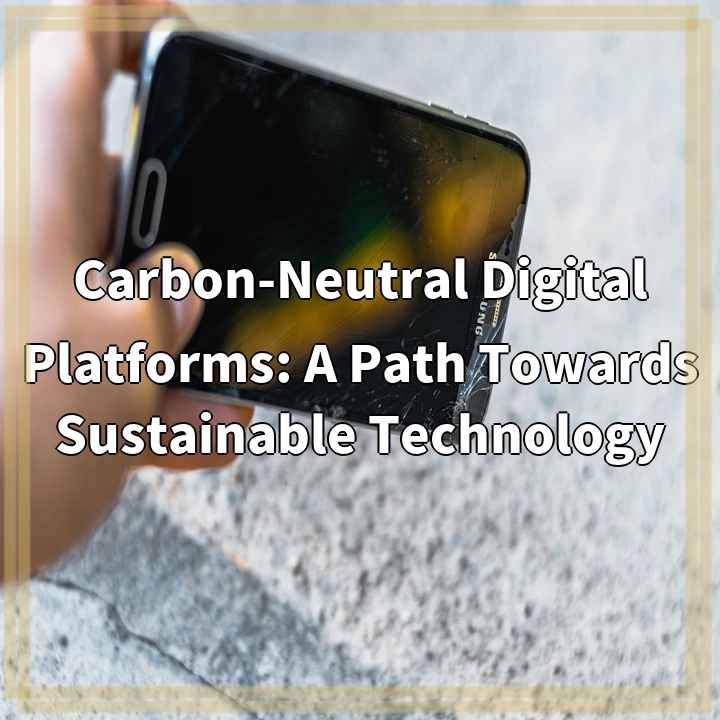
What it is:
Green Advances in Telecommunications is a transformative approach to revolutionize connectivity in a way that aligns with sustainable principles. It involves the development and implementation of innovative technologies and strategies that reduce the environmental impact of the telecommunications industry.
Real-World Problems:
The telecommunications sector is faced with several environmental challenges that need to be addressed for a sustainable future:
1. Energy Consumption:
The rapid growth of digital communication and the increasing demand for data transmission result in a significant energy consumption in the telecommunications industry. The operation of data centers, transmission networks, and mobile networks requires a considerable amount of electricity, contributing to greenhouse gas emissions and putting a strain on the energy infrastructure.
2. E-Waste:
Electronic waste, or e-waste, is a major issue for the telecommunications industry. With the constant proliferation of new devices and technologies, outdated or broken equipment is quickly discarded, leading to the accumulation of toxic materials in landfills. Proper e-waste management and recycling practices are required to minimize this environmental impact.
3. Carbon Footprint:
The carbon footprint of the telecommunications industry is substantial, primarily due to the energy-intensive infrastructure and network equipment. The use of fossil fuels in powering network facilities and the emissions associated with manufacturing and disposal of equipment contribute to climate change. It is crucial to find ways to reduce carbon emissions throughout the lifecycle of telecommunication technologies.
4. Resource Extraction:
Traditional telecommunication technologies heavily rely on the extraction of finite resources, such as rare earth metals, copper, and other precious minerals. The extraction process not only depletes these resources but also causes significant environmental degradation, including deforestation, habitat destruction, and water pollution. Finding alternative materials and reducing resource consumption is essential for a sustainable telecommunications industry.
5. Digital Divide:
While digital connectivity brings numerous benefits, there is a persistent digital divide between urban and rural areas, as well as within different socioeconomic groups. Bridging this divide requires sustainable solutions that can provide reliable and affordable connectivity to all, ensuring equitable access to education, healthcare, and economic opportunities.

Solutions to Green Advances in Telecommunications:
Addressing the real-world problems associated with the telecommunications industry requires innovative solutions that prioritize sustainability. Here are some key approaches:
1. Energy Efficiency:
Improving energy efficiency is a crucial step in reducing the environmental impact of the telecommunications sector. This can be achieved through the use of energy-efficient equipment, optimizing network design, implementing smart grid technologies, and adopting renewable energy sources such as solar and wind power.
2. Circular Economy and E-Waste Management:
Implementing circular economy principles can help reduce the generation of e-waste and promote responsible management of electronic devices. This involves designing products for longevity, recycling and refurbishing old devices, and facilitating take-back and recycling programs to ensure proper disposal of electronic equipment.
3. Green Infrastructure:
Developing green infrastructure, such as green data centers and eco-friendly network facilities, can significantly reduce the carbon footprint of the telecommunications industry. This includes utilizing energy-efficient cooling systems, implementing virtualization and cloud computing technologies, and adopting sustainable building practices.
4. Sustainable Material Sourcing:
Exploring alternative materials that are more sustainable and less reliant on resource-intensive mining processes is essential. This involves researching and developing new technologies that rely on recycled or bio-based materials, as well as promoting responsible sourcing practices that minimize environmental and social impacts.
5. Universal Connectivity:
Ensuring universal connectivity, particularly in underserved areas, is crucial for achieving sustainable and equitable access to telecommunications. This can be achieved through initiatives that prioritize investment in rural infrastructure, promote community networks, and bridge the digital divide through affordable and accessible connectivity solutions.















